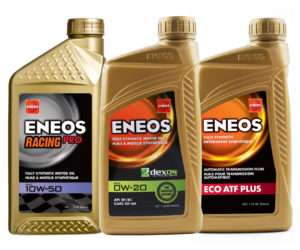We’re getting down to “base”ics. Working with parts and servicing vehicles, it is good to have an understanding of base oils used in the automotive industry and how they perform. We’ll review a brief history and composition of base oil, the foundation of all ENEOS products.
Background
Base oils are used in products including greases, motor oil, and automatic transmission fluid. Traditional base oil is produced by refining crude petroleum oil, where heat is used to separate various distillates (or elements) of the oil. During the heating process, light and heavy hydrocarbons are separated; light ones are used for fuel, and heavy ones for base oils.
Base Oil groups
The American Petroleum Institute (API) has categorized base oils into 5 main groups based on refining methods and their properties, such as viscosity and sulfur content.
Group I has its origins dating back to the 1930s and is the least refined type of base oil. A refining improvement was implemented in the 1960s to make these base oils more stable and longer lasting than the original base. Group I base is defined by having a sulfur content greater than .003% and having a Viscosity Index of between 80 and 120.

Group II began use in 1971, and is a better grade of petroleum base oil due to removal of all impurities, leading to a clear coloration. Group II is defined by having a sulfur content of less than or equal to .03% and a Viscosity Index of between 80 and 120.
Group III originated in 1993 and is the best grade of petroleum base oil since it is created by a newer refining process called hydrocracking, which makes the oil more pure and refined than other methods. API defines this base stock as being equal or greater than 90% saturates, equal or less than .03% sulfur and having a Viscosity Index equal or greater than 120. This group is referred to as synthetic due to the hydrocracking process.

Group IV came about in the mid 1970’s, are 100% synthetic chemical compound oils made of poly-alpha-olefins (PAO). Group IV base oils have a viscosity Index of 125-200. Group IV have low pour points and so are suitable for use in very cold weather.
Group V includes any other synthetic base oils not mentioned above. Some examples would be esters and naphthenic oils.

It’s all about that base
In essence, better grade base oils have a higher Viscosity Index (VI), which provides better performance, protection, and fuel economy.
ENEOS signature products use synthetic, high-performance Group III or IV base oils, which are what help it provide the highest VI and performance available.
View compatible products in our online catalog at Epicor, WHI, or SEMA Data Corp. You can also use the Oil Selector tool from our website to find product matches.

